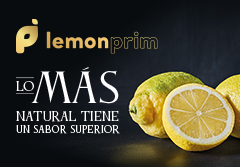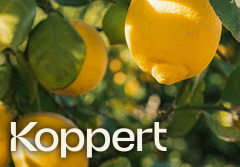The citrus fruit variety world revolves around the simultaneous growing of historically free varieties, alongside varieties that pay out royalties and with the sights put on the defined date for these, in turn, to become free.
This article analyses how royalties have developed, the change in mentality of citrus fruit growers, the capacities and the results that these clubs offer, as well as an ethical reflection.
A little history
At the end of the first decade of the 21st century, this formula started taking shape within the citrus fruit world. It was new for the category, but had been used for many years for apples.
Since then, many varieties have been presented with royalties. Some appeared with very specific outlines of structured clubs, others with more specific details regarding how to put them on the markets and others, simply with a restriction of plants, or guaranteed hectares. Within these varieties there were mandarins, oranges and lemons.
However, over the years, three varieties have become consolidated and all three correspond to second season mandarins: Nadorcott, Tango and Orri.
It is true that some other mandarin varieties are beginning to follow, but it is too early to see a real consolidation. In oranges and lemons, there are also clubs, but it is premature to talk about tangible volumes and varieties with significant differentiations.
For this reason, this article will only analyse the tree most consolidated mandarin varieties.
Back in 1996, in citrus fruit circles the name Afourer started to be heard, and in 1997 AVASA (Agrupación de Viveristas de Agrios S.A.) informed of the list of seedlings sold in the Valencian Community by the authorised nurseries, concluding that there were 1,200 Afourer plants, the name that was used for these seedlings until 2002, when 30,316 plantations of Afourer and 17,990 of Nadorcott appeared on the list. This double denomination continued until 2007, when the sales with these two names stopped and they did not reappear until 2010.
At the moment of this halt, 774,820 Afourer & Nadorcott trees had already been planted, in addition to a series of hectares of grafts onto planted material.
Meanwhile, the Asociación de Obtentores Vegetales (ANOVE – Association of Plant Breeders) had been created, following the Club de Variedades Protegidas (CVVP- Club of Protected Varieties), as well as different legalisation processes which involved conflicts with trade unions and with the traditional farmers, most of them small and medium-sized farmers. It was a period of head-butting of different mentalities, as well as the start of court proceedings with their corresponding subsequent sentences, which in most cases were resolved in favour of the variety owners.
At this time, the first plantations of Nadorcott, or Afourer&Nadorcott, however you may want to call it, were already in production. On the other hand, the 30 million clementine trees planted between 1996 and 2005 also came into production and reached a historical maximum of 1,600,000 Tm, with a collateral problem: the tolerant rootstock brought the ripening forward and while in the past the orchards of Clemenules on bitter rootstock were harvested in February without any problems, now the trees had to be cleaned before mid-January.
A detailed analysis of this table indicates that the best results for the producers come from the mandarins with royalties. Clearly, the ‘Royalty Model’ and the clubs with their ‘numerus clausus’, either by trees or by hectares, as well as the collateral financing systems, have become consolidated.
The present moment
The management of the three most implanted varieties to date is independent, as Nadorcott is managed by the CVVP, Tango by Eurosemillas, as the licensee of the patents from the Riverside University (California), and Orri by Orri Running Committee (ORC) on behalf of the Plants Production and Marketing Board (PPMB) in Israel.
The plantations carried out by the latter have already exceeded the figure of 400,000 Tm, as is shown in the table
The graph shows that, considering the number of hectares planted between the three clubs, the figure will soon reach 15,000 and their yield for 2025, according to all the analyses, is calculated at a harvest in Spain of around 550,000 TM, just with the licenses distributed to date. A panorama on which the Leanri variety and other less prominent ones that also appear in the second season should not be forgotten.
In the current 2021/22 campaign, the sum of these three varieties is estimated at around 460,000 Tm and in a first approximation, with all the risks that prophecies entail, the decrease in Clemenules seems to leave an open panorama from January onwards.
Where and who has planted mandarins with royalties?
We know the ‘where’ with great accuracy and the ‘who’, we can imagine. According to the data directly or indirectly provided by the different managers, the hectares of the three varieties by province are as follows:
The image shows how these new mandarins have been planted in the areas where there had been virtually no mandarins previously. Specifically, in Castellon, of its 28,382 ha of mandarins, only 3.52% are of these varieties, although they provide a good contribution to results. In Valencia, this situation is not as exaggerated, but its percentage is also below the Spanish average.
If we look at the ownership structure in these two provinces, it is worth mentioning that they are mainly small and medium-sized owners, with plots of land located in the historical regions of Valencian smallholdings.
This was the area that caused the first head-on reaction against the legalisations of the new varieties. Partly, because it meant a significant change in mentality for citrus fruit growers. Until the end of the last century, the new varieties had been passed on from farmer to farmer without the concept of variety ownership existing. The development of these clubs meant a complete change of paradigm and it was difficult for the working method to be understood. It should also be emphasised that, in some cases, farmers were encouraged to plant the new developments without properly explaining what could happen afterwards, although there was also, although not in general, a rogue group who did not want to meet the rules.
Production in Morocco and Egypt
In order to have a more global view, it should be mentioned that for years now they have been planting Nadorcott in Morocco and Egypt. Tango has also commenced its journey in Egypt and therefore, Spain will have to share markets with fruit from these sources.
On the other hand, it is also true that from February to May, the market has been demanding better mandarins than the Ortaniques and now, they are ready to pay for an ‘easy-peel’ product.
For all these reasons, it is possible to imagine that Europe could be capable of taking this on in an ordered manner and without dropping into the prices of December and January caused by clementines, with an offer of around 1,200,000 Tm including all the sources.
And this is the case while a real ‘clementine’ valid for these months does not appear, because then the consumer reaction could change direction.
Ethical doubts
The historic chain of value based on small and medium-sized producers, the small and medium-sized exporters and authorised nurseries, which led Spanish citrus fruit production figures from 2,500,000 to 5,500,000 Tm in the second half of the last century, in general worked, passing on the marketing results to the families and the villages that grew the produce. These villages remained ‘sustainable’ and many families of humble means were able to send their children to university thanks to citrus fruits. There were no royalties and the varieties were shared. The question is: will these new companies that ‘own’ the varieties return part of their profits to the lands and the families that generate them?












